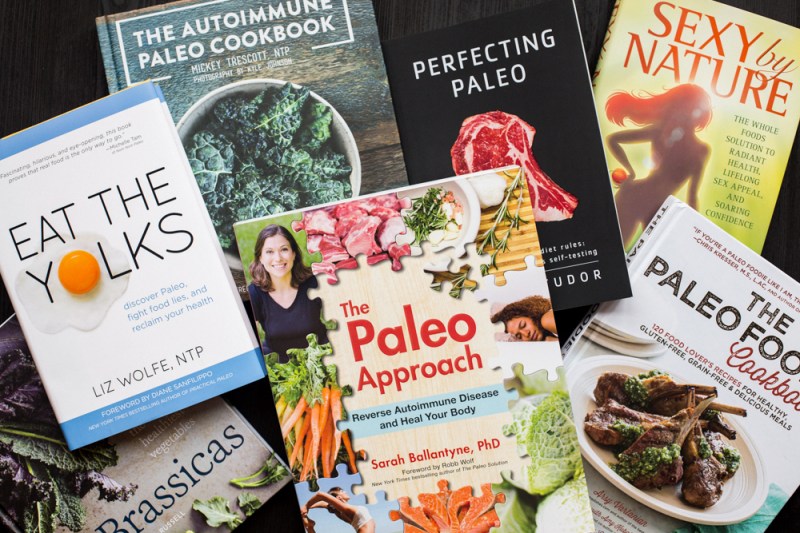
Man, there are a lot of new books out right now. I have a mounting pile that needed some attention, some that I personally bought and others that were sent for me to review. I thought I’d take a moment and briefly look at these additions to my growing library.
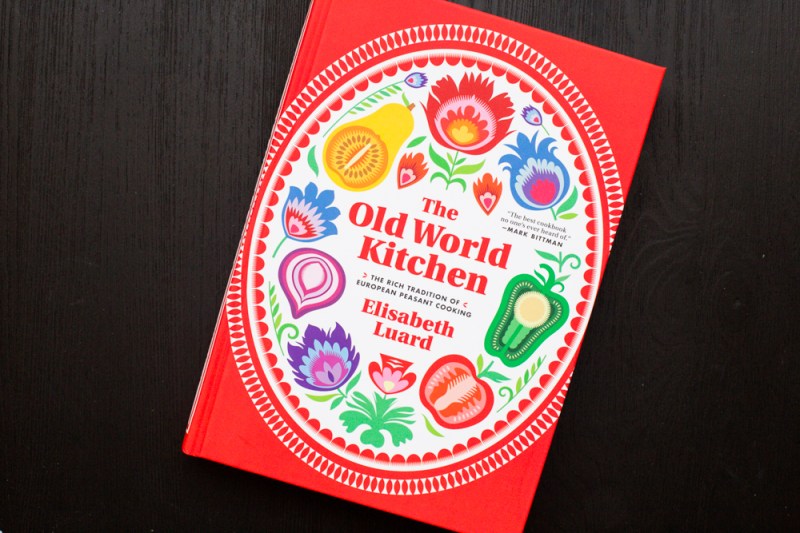
The Old World Kitchen: The Rich Tradition of European Peasant Cooking
Elizabeth Luard
Release Date: November 12, 2013
Even though this isn’t technically a Spring 2014 release, I ran across this book during one of my book signings this month, and was immediately enamored. It’s actually a reprint of a book first published in 1987, but the theme is timeless. It’s definitely not written with any sort of elimination diet in mind (Paleo, Gluten Free, etc) but the chapters are broken down thematically and it’s easy enough to avoid the Pasta and Bread chapters. A huge part of this book is dedicated to various proteins (everything from eggs to reindeer), 210 pages in total, so this is a great book for Paleo eaters who are okay with making a few substitutions here and there. I’d say that at least 60% of this book is within Paleo standards or easily modified to be so, which is a huge amount compared to most cookbooks on the market. There are also a ton of recipes in here, so even 60% of a ton is a lot, right?
Luard doesn’t take any shortcuts (something I love), and doesn’t shy away from traditional fats like lard and duck fat. There’s also a bit of variation within many of the dishes – for example, there are two Garlic Chicken recipes, both French and Spanish versions, and three different ham recipes. This is the perfect cookbook for adventurous home chefs that want to tackle a new, traditional recipe from time to time, and do it right.
Favorite recipes: Pork and Herrings (Finland), Duck with Cucumbers (Romania), Pickled Fish (Portugal).
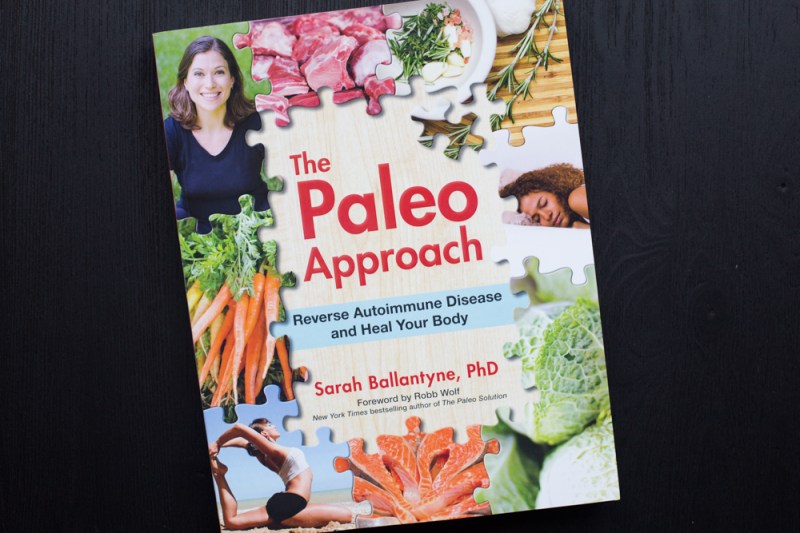
The Paleo Approach: Reverse Autoimmune Disease and Health Your Body
Sarah Ballantyne, PhD
Release Date: January 28, 2014
Sarah Ballantyne’s book is a necessary addition to the Paleo canon. This science-heavy tome explains the reasons behind autoimmunity and contains helpful, practical solutions for many ailments. Many books claim to heal you. Many books claim to be the solution. For once, here’s a book that actually delivers on its promise to restore health (and to explain exactly why it works). I’ve struggled with an autoimmune disease for nearly ten years, and everything I’ve read in this book rings true to the path I’ve taken over the years. Sarah breaks her book down into two sections – the cause, and the cure – and packs each page with a ton of thorough, well-written science. Her approach to reversing autoimmunity is doable, and she walks you through every step of the way. The Paleo Approach is basically the most personable, powerful science textbook I’ve ever read. But make no mistake about it: The Paleo Approach is an involved read, and takes a bit of effort to get through. This isn’t a bad thing, and I’m not very science-minded, so that may have been part of my difficulty in reading it.
I haven’t been able to read through this whole book cover to cover (it’s massive) but I have spent time with each chapter. Honestly, it’ll take me a few re-reads to get my head around some of the more technical chapters, and I expect to be digging into and referencing this book for years to come. I’m looking forward to reading her companion cookbook when it comes out this summer.
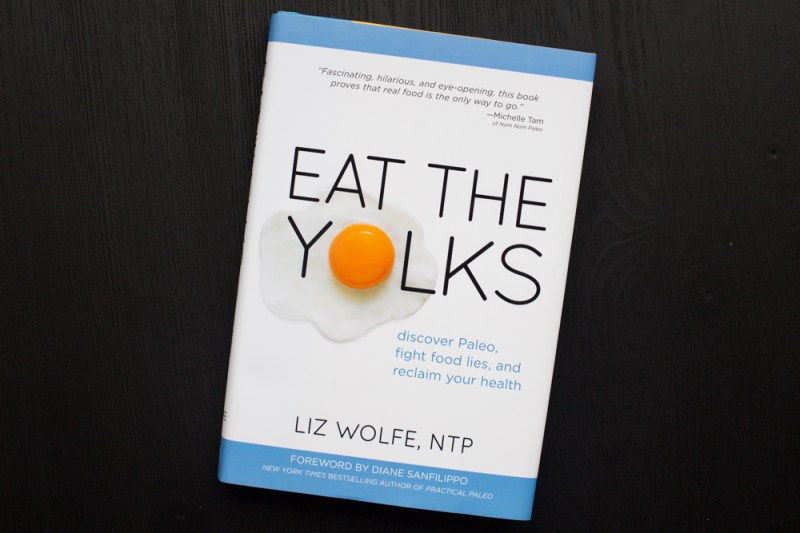
Eat the Yolks
Liz Wolfe
Release Date: February 25, 2014
Eat the Yolks is mostly advertised as a down-to-earth, somewhat sassy approach to Paleo-minded nutrition. The thing is, once you get past Liz Wolfe’s unique writing style, you’ll immediately find that this little book is secretly packed to the gills with good information. In fact, having read about nutrition for several years now, I still found myself re-reading paragraphs to make sure I understood everything. So in that sense, I think this book is a good fit for people who are interested in nutrition, are comfortable with science, and are looking for an engaging read. I’m a fan of Liz’s writing – how could I not appreciate a good Battlestar Galactica or Teenage Mutant Ninja Turtles reference? I also like the term “carbage”, which is clever.
The big question that many Paleo readers will have is whether they need another Paleo nutrition book. I think there are some original ideas in here that aren’t typically seen in other Paleo books. Liz is okay with dairy, raw preferred, which I agree with. She makes a compelling argument against fish oil, which is similar to Paul Jaminet’s stance in the Perfect Health Diet, the diet I most closely follow (although lately I’ve been experimenting with small doses of fermented cod liver oil). She’s a staunch advocate of whole foods and this book is both inspiring and affirming; much of it is a retread of familiar topics, but done smartly and with enthusiasm. There’s a lot of good information in here for those new to Paleo principles, but is still an excellent accompaniment to many existing Paleo books like Perfect Health Diet and Your Personal Paleo Code.
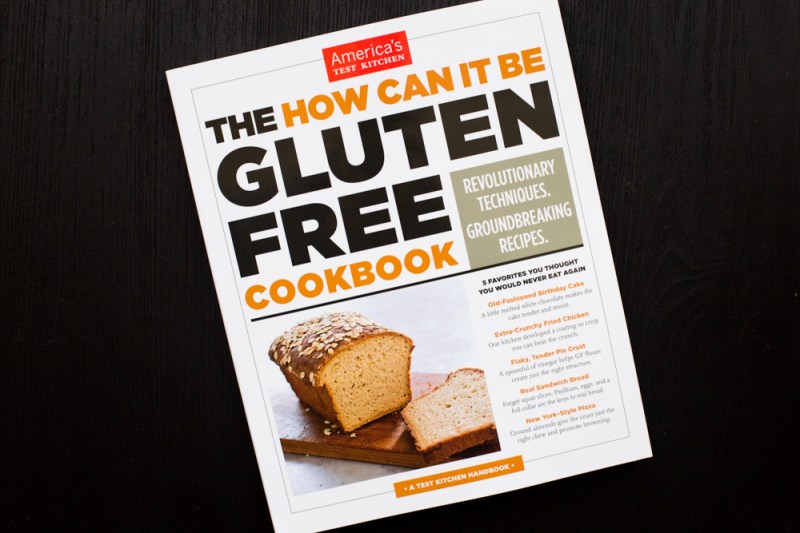
The How Can it Be Gluten Free Cookbook
America’s Test Kitchen
Release Date: March 1, 2014
Huge fan of Cook’s Illustrated and America’s Test Kitchen. I love how they question everything and approach recipes with a trial-and-error approach. I happened across this book when browsing through Amazon, and immediately bought it. I knew full well that the book was going to be tailored towards taste over nutrition, but I figured there would be some good things to learn regardless.
I was right. There is a ton of information here, written while looking through a gluten-free lens. This isn’t a book looking to capitalize on the gluten-free trend; instead, it’s a thorough, fascinating look at every facet of cooking from a gluten-free perspective. The recipes are most definitely skewed towards the baking/breads/treats end of the spectrum, but that makes sense since that’s what gluten-free eaters are most interested in. After all, for a gluten-free steak recipe, all you really need is a steak recipe (albeit one that doesn’t have gluten in it).
This book is corn and sugar heavy, and doesn’t shy away from xantham and guar gums, but there are plenty of recipes in here that will appeal to those interested in a gluten-free meal with one or two sup-optimal ingredients. Not recommended for Whole30 or ardent “squeaky clean” Paleo devotees. Truth be told, this isn’t likely a book to cook through, but rather to take notes from to incorporate some of these techniques into your own cooking. But I totally think my pizza recipe is better than theirs.
Favorite recipes: Fried Chicken, Eggplant Parmesan, Light and Fluffy Biscuits (holy crap!)
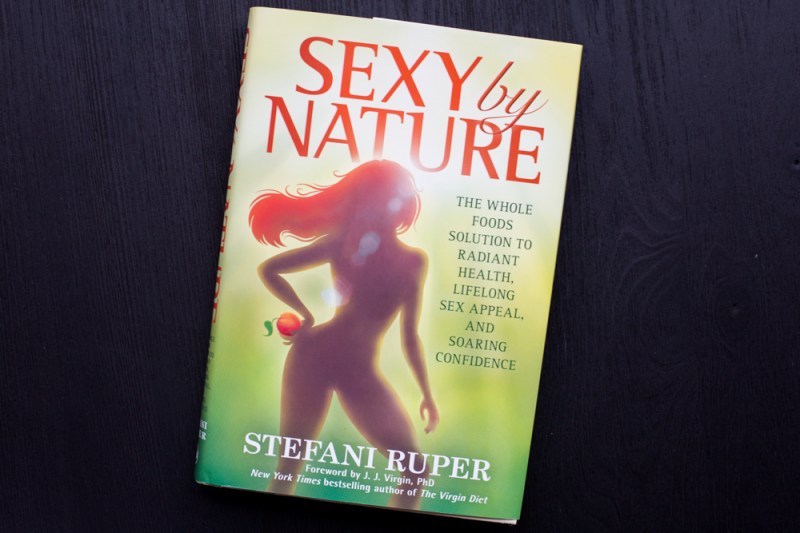
Sexy by Nature
Stefani Ruper
Release Date: March 18, 2014
I met Stefani Ruper last year at the Paleo f(x) conference in Austin, and I was impressed by her candor, enthusiasm, and friendliness. I didn’t plan on reading a book specifically written for women, but I started flipping through and found it compelling enough to spend a good amount of time with it. So to caveat my review, I haven’t read through this whole book, but have sampled the chapters that appealed to me the most.
The book is broken down into five steps: Stefani’s health strategy (1), food (2), lifestyle (3), female-specific health issues (4), and tying it together (5). The book is peppered with helpful, visual lists which help to simplify some pretty unique and empowering concepts. I feel like a little of everything is covered here: spirituality, sleep, sunshine, you name it. It’s informative without getting mired down in details, which I think is a good approach. Overall I think this is a helpful read for women hoping to tweak their diet or lifestyle, or to look at the myriad of factors that impact health.
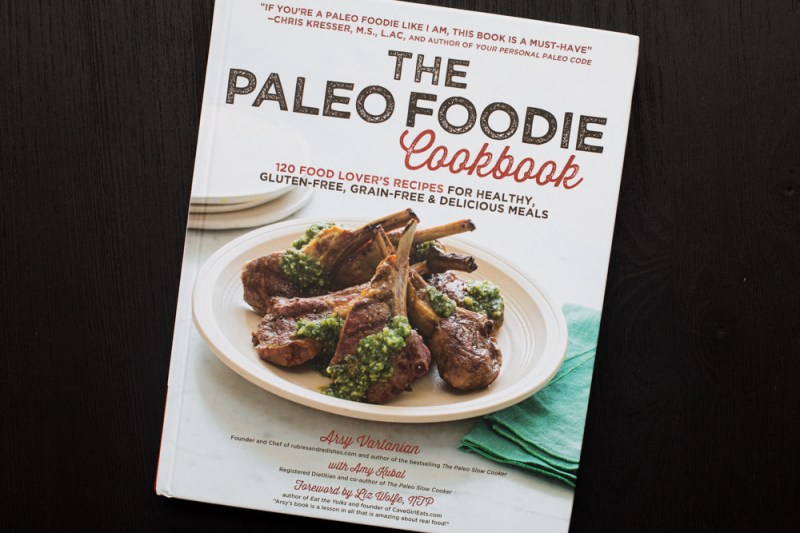
The Paleo Foodie Cookbook
Arsy Vatanian
Release Date: March 25, 2014
This book is right up my alley. I was a fan of Arsy Vartanian’s first book, The Paleo Slow Cooker, for its ease of use and approachability. The Paleo Foodie Cookbook is a huge step up in terms of presentation and maturity. This book starts with an introductory segment (written by Amy Kubal) and some cooking tips, and is then divided into sections that are easy to navigate: fats, appetizers, main courses, salads, soups/stews, sides, and sauces. Yep, no desserts – very cool! Okay, there’s a fruit salad, but still.
The photography has improved greatly from her first book, with vibrant, simple pictures that really highlight the diversity of what you’ll find within. Not every recipe has a photo, but I’d say that 75% of them do. Arsy has really raised the bar on her recipes, finding a good middle ground between complex and easy. She combines flavors in unique and elegant ways. Also included are some really incredible international recipes, and Arsy highlights her Armenian heritage with recipes like Grape Leaf and Cabbage Dolmas.
On a personal note, this is the first cookbook where I’ve been asked to contribute a quote, and it’s right on the first page of the book. That’s a pretty cool feeling, and I’m proud to have a tiny little part in such a pretty, useful book.
Favorite recipes: Grilled Chicken Chermoula, Ikra (Middle Eastern Eggplant Spread), Caramelized Onion and Beet Soup.
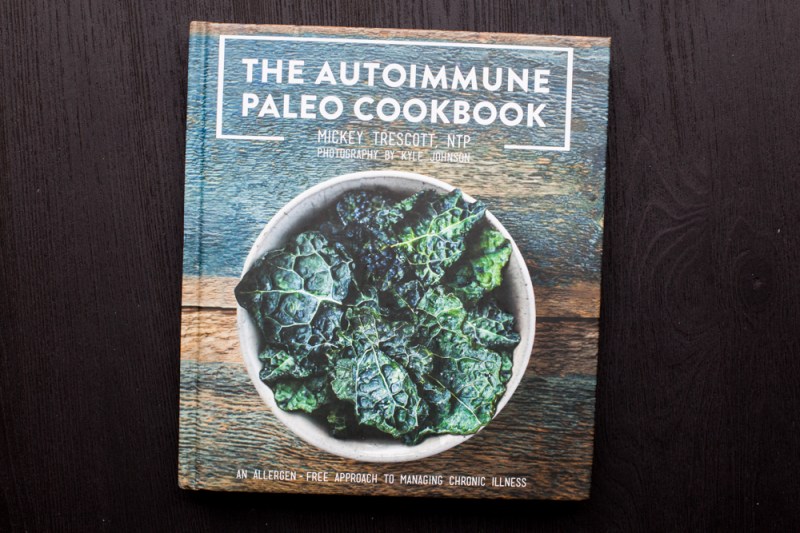
The Autoimmune Paleo Cookbook
Mickey Trescott, NTP
Release Date: March 31, 2014
I’ve been waiting for this cookbook for a while now. I met Mickey Trescott last summer during the Ancestral Health Symposium, and we hit it off very quickly. I was immediately impressed with her taste, style, and ability to make delicious recipes using very few ingredients; like me, Mickey realizes that the right technique can turn even a few ingredients into something really special. Mickey wrote an eBook version of The Autoimmune Paleo Cookbook a while ago, so I was really looking forward to an updated hardcover copy of her work. Also, Mickey’s husband was cool enough to make the boards I used for the cover of my book, so bonus points for the whole Trescott family.
In her book, Mickey provides a brief look at the Autoimmune Paleo Protocol and kitchen basics, then dives into the main event: simple but exquisite recipes. The best praise I can give this book is that it doesn’t seem like a diet book, let alone a book tailored to a niche faction of an already niche diet. In reality, this is a book that anyone could cook through and find optimal health, regardless of any specific food allergies. It has everything you’d want from a typical cookbook, from appetizers to desserts. The recipes are perfectly crafted and explain everything from the tools you’ll need, time invested, difficulty, and amount of servings. The Autoimmune Paleo Cookbook also comes with meal plans and shopping lists, which I imagine will be very helpful for anyone looking to dive into the Autoimmune Protocol in the most delicious way possible.
Favorite recipes: Mushroom Stuffed Cornish Hens, Sear-Roasted Halibut, Cinnamon-Ginger Baked Pears.
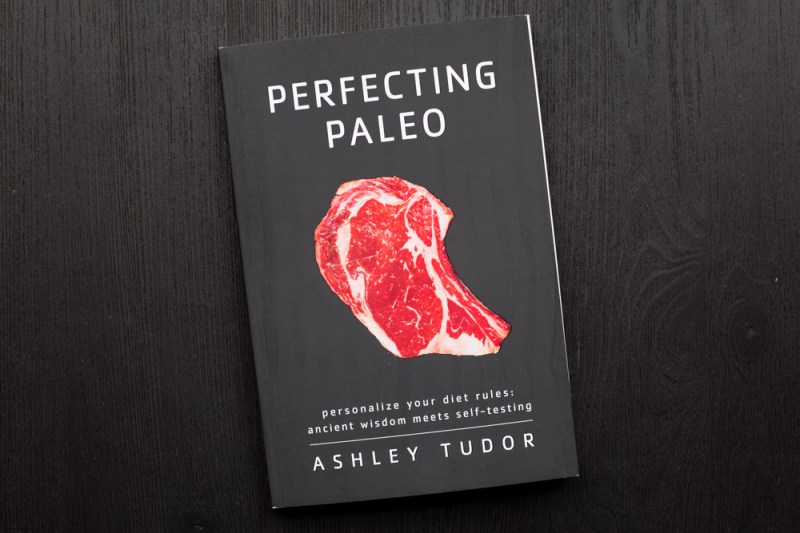
Perfecting Paleo
Ashley Tudor
Release Date: April 1, 2014
I’m not very familiar with Ashley Tudor, other than the few times I’ve flipped through her previous book, Sweet Potato Power. I wasn’t sure what to expect from Perfecting Paleo, but the easiest way to sum it up is that it focuses on the implementation and tweaking angle of Paleo for those that wish to experiment with data. It’s a layman’s look at nutritional science, with a hefty biohacking slant. In other words, are you the kind of person that likes to pore over your bloodwork, track glucose levels, and analyze heart rate variability? Then this is the book for you.
Personally, scrutinizing health numbers isn’t on my radar; I’d rather search through historical documents to find a more wholesome, intuitive connection with my ancestry. These are both two important sides of health and wellness, so I can’t fault Ashley for having a different focus than mine. She also breaks down specific tests, their costs, and benefits. This is probably a good resource for anyone looking to jump into health-related data.
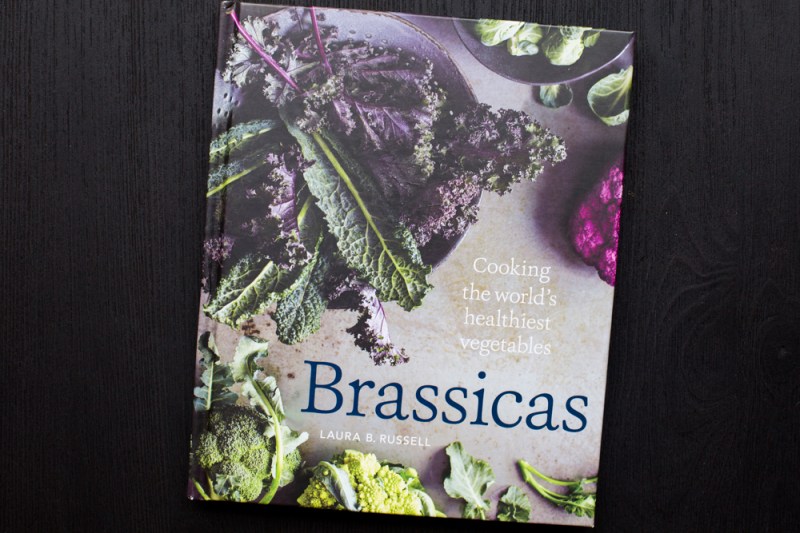
Brassicas: Cooking the World’s Healthiest Vegetables
Laura B. Russell
Release Date: April 8, 2014
Kale is the new hotness, and this book deftly avoids the trend by encompassing a wider range of vegetables. Specifically: kale, cauliflower, brussels sprouts, cabbage, broccoli, leafy brassicas (greens), Asian brassicas (Chinese cabbages), root brassicas (radish, turnip), and kohlrabi. Each section has about 10 recipes and useful information like what to look for when choosing the vegetable, prep, and nutrition. Overall, it’s a pretty varied selection of vegetables to choose from, and really delicious looking collection of recipes that would work well as sides or light meals.
Brassicas isn’t a Paleo book, but it is written to be gluten-free (although not advertised as such). The book only contains a few dishes with meat, most being cured meats (pancetta) or eggs. Overall, it’s a vegetable-centric book that is simple and easy to follow. Tweaks will need to be made for strict Paleo eaters, as some recipes have rice and dairy. There is an excellent chart in the back of the book that highlights whether the recipe is vegan, vegetarian, or contains food items like eggs or soy (only a few recipes have the latter). I think this book is a great resource for people looking to dig a little deeper into their local produce section, or those who want to figure out how to cook the veggies they encounter at the farmer’s market or in their CSA bags.
Favorite recipes: Broccoli Rabe with Romesco Sauce, Lemony Broccoli Chop, Curried Collard Greens

Why do you think raw milk- is it flash pasteurized ??? – is safe?
Is whole milk better than 2per cent?
Why do you not rec fish oil???
Thank you!
Dr Boldt
Mom of four, internist, gluten free and curious re your book/ diet.
Sent from my iPhone
>
LikeLike
Hi Dr. Boldt, raw, unpasteurized milk is a very low-risk food. There is a lot of good information out there from the Weston A. Price foundation, like their Real Milk campaign (http://www.realmilk.com/). Here’s a good summary on the safety of raw milk: http://www.westonaprice.org/press/new-studies-confirm-raw-milk-a-low-risk-food
Whole milk (and full fat dairy in general) is better than other forms of adulterated milk. Skim milk in particular has been linked to weight gain (which is the opposite of intuition). http://link.springer.com/article/10.1007%2Fs00394-012-0418-1
Fish oil is generally not recommended because it is a processed food and the oil can degrade quickly. An ideal and whole-food solution would be to get your oil directly from oily, cold water fish. I think that fermented cod liver oil is the best version of fish oil out there, especially from Green Pasture (http://www.greenpasture.org/public/FAQ/index.cfm) where they make their oil in small batches.
LikeLike
I absolutely loved The Paleo Approach! I don’t personally have an AI disease, but I found her book informative and useful nonetheless. Great review post, thanks!
LikeLike
http://modernfarmer.com/2014/03/invasive-diet-takes/
I thought this story might be of interest to you.
LikeLike
Dan, that’s a pretty cool article! What a delicious way to clean up after ourselves.
LikeLike
My girlfriends and I are always looking for new blogs. Your blog is wonderful. I’m a huge fan of “Cooking With Mr. C.” which is run by a guy. Guys are the best cooks. I will share your blog with my friends. We love to follow many blogs.
LikeLike
The book “eat the yolks” sounds so intriguing, but my worry about that, is cholesterol?
LikeLike
Liz does a great job of breaking down why dietary cholesterol isn’t linked to body cholesterol like we think it is – it’s one of the big premisses of her book, that many of our conventional worries (cholesterol, fat) are unjustified!
LikeLike